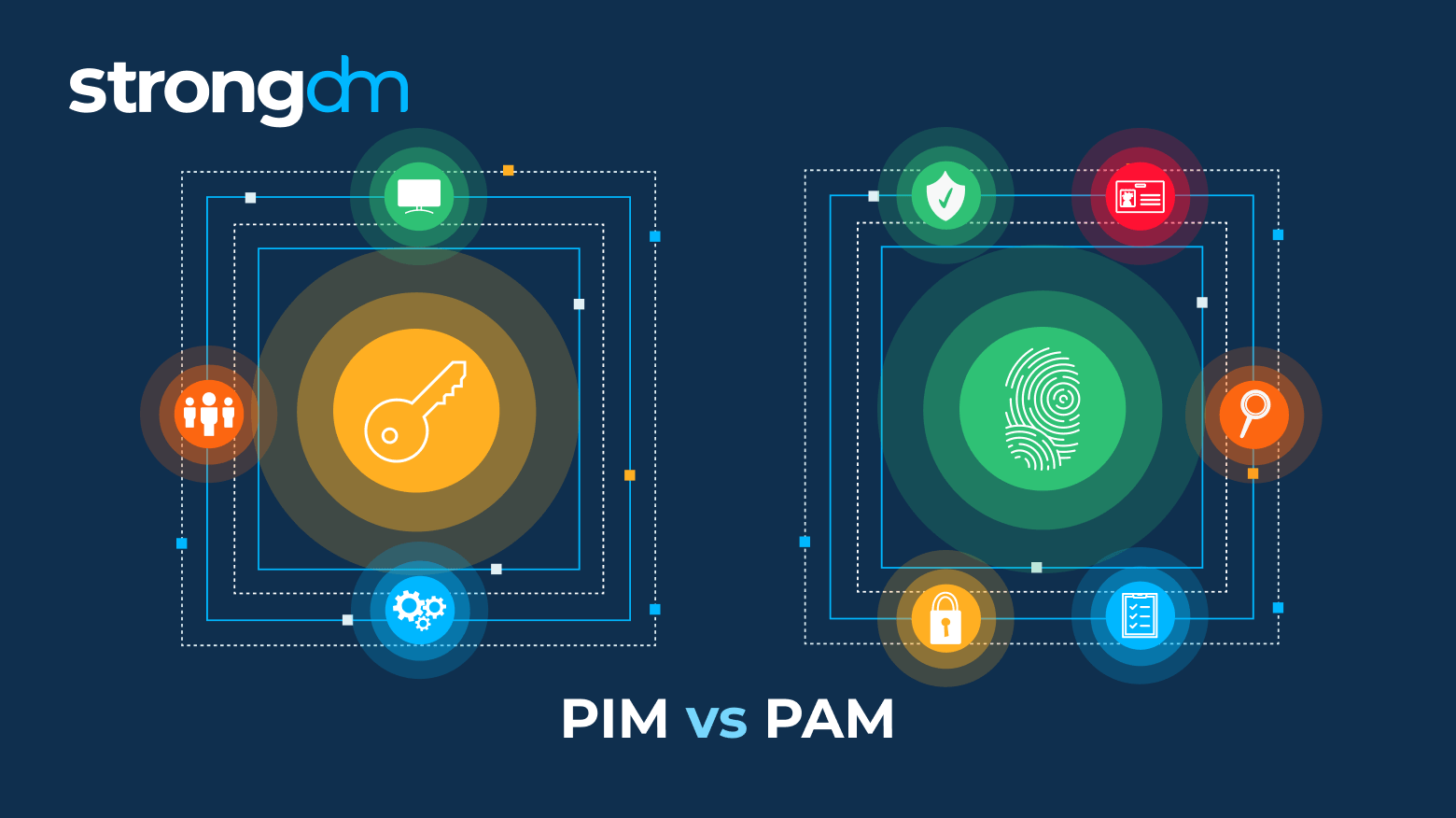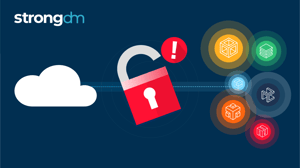PIM vs. PAM Security: Understanding the Difference


Written by
Schuyler BrownLast updated on:
October 24, 2025Reading time:
Contents
Built for Security. Loved by Devs.
- Free Trial — No Credit Card Needed
- Full Access to All Features
- Trusted by the Fortune 100, early startups, and everyone in between
Summary: Understanding the nuances of privileged access management vs privileged identity management can be challenging. Although PIM and PAM are often used interchangeably, there is an important difference between PIM and PAM that companies should know. In this article, we’ll explain PIM vs PAM and explore how they work to demonstrate the differences between them. By the end of this article, you’ll know what role PIM and PAM should play in your security strategy.
What are PIM and PAM?
Almost every organization uses identity and access management (IAM) strategies or tools as part of its security practices. IAM is the overarching term to describe how companies manage user identities, authenticate users, and control access to company resources. Privileged identity management (PIM) and privileged access management (PAM) are subsets of IAM.
PIM and PAM address how companies manage who can access a company’s most critical resources, like servers, databases, applications, and Kubernetes clusters. They operate under the principle of least privilege to limit who and how many users can access secure systems and the sensitive data stored within.
What is privileged identity management (PIM)?
Companies often control login access by maintaining a directory of privileged user identities and what resources those identities have access to based on role-based or attribute-based access controls. Privileged identity management (PIM) is the process companies use to manage which privileged users—including human users and machine users—have access to which resources.
PIM security policies often focus on controlling users with elevated permissions to change settings, provision or deprovision access, and make other significant changes without formal oversight. Some companies use PIM solutions to monitor user behavior and distributed access to prevent admins from having too many permissions.
What is privileged access management (PAM)?
Each privileged user within a directory is permitted access to some resources based on role-based or attribute-based access controls. Privileged access management is the process of controlling and monitoring access to critical company resources, often using identity and access management technologies.
Companies use PAM solutions to manage credentials, authenticate user identities when a user tries to access a company resource, and provide just-in-time access to identities that normally can’t access certain resources. Often, PAM tools also offer detailed session monitoring and access logs to help companies report on usage patterns and meet compliance standards.
💡Make it easy: Just-in-Time Access works best when it is easy for the end user to request and receive access. It should also be auditing to map the end-to-end chain of events, who is requesting access, why they are requesting it, and for how long. Play the video below to see how easy StrongDM makes Just-in-Time access, and try it yourself.
PIM vs. PAM: What's the Difference?
The main difference between PIM and PAM is that PIM addresses what access a user is already granted, while PAM addresses how to monitor and control access whenever a user requests access to a resource.
PIM focuses on resource management and defining which roles or attributes determine that a user gains access to particular resources. For example, determining which resources a new employee needs access to during onboarding is a PIM-related policy.
Meanwhile, PAM focuses on the security policies and tools that help companies store and encrypt credentials, validate if users are permitted to access certain resources, and provide a secure way for approved users to access critical systems, tools, and data. PAM solutions help teams maintain least-privilege policies by allowing teams to temporarily provision access to support user workflows without unnecessarily creating new static user credentials.
⚠️ Traditional PAM deployments have gaps. Learn how to protect your databases, the cloud, Kubernetes, and more with our legacy PAM augmentation guide.
PIM vs. PAM Comparison Table
| PIM | PAM |
|
|
PIM and PAM: How Do They Work?
Rather than comparing privileged access management versus privileged identity management, it’s more valuable to consider how PAM and PIM complement each other. Many PAM solutions are already designed to support PIM policies and management.
PIM/PAM security starts with finding the right tools to manage resources and user identities within your organization. A PIM/PAM solution works by connecting with a user directory—which contains all applicable users, their existing permissions, and their encrypted user credentials—to a resource management platform. Often, these solutions let users use a single sign-on application to log into resources they are allowed to access through a secure gateway.
The secure gateway confirms the identity has access to the requested resource and allows the authenticated user to use the resource, logging each interaction as it occurs. If the identity doesn’t have the right permissions to access a resource, admins can provide temporary credentials through their PAM solution. By limiting how many users have constant access to resources, companies can reduce the likelihood of a breach.
Introducing ZeroTrust PAM: How Is It Different From PIM and PAM
PIM and PAM focus specifically on managing and controlling access to privileged accounts and sensitive systems. However, organizations need to also ensure that access is only available in the moments it is needed and that that access is secure and auditable. Zero Trust Privileged Access Management (PAM) enables this approach by delivering just-in-time access and eliminating always-on credentials through Zero Standing Privileges.
💡Glossary term: Zero Trust PAM is the concept that credentials and access should only exist in the moments they are needed, and that access must be secure and auditable.
Where PIM and PAM are focused solely on privileged accounts, Zero Trust PAM extends the secure authentication, authorization, and auditing capabilities to all technical users. It also greatly simplifies the process of access infrastructure, helping to make technical employees more productive while continuing to deliver a high level of security.
Learn more about Zero Trust PAM.
How StrongDM Helps with PIM and PAM
There’s no need to debate PAM versus PIM with StrongDM. StrongDM’s Zero Trust PAM platform gives companies the best of both worlds by ensuring that the right users can always access the right resources at the right time.
Zero Trust PAM platform secures, controls, and monitors user access across your entire IT infrastructure, so you have full visibility into who is accessing which resources. StrongDM makes it easy to automate PIM and PAM policies, including user onboarding and offboarding, providing just-in-time access, managing user permissions, and more.
Plus, detailed logs and session replays make compliance reporting and auditing a breeze. With granular insight into user behavior across all your critical systems, your team can easily identify irregular behavior and block unauthorized access before a breach happens.
Check the Boxes for PIM and PAM with StrongDM
In today’s cyber world, the debate between privileged access management versus privileged identity management is a thing of the past. The reality is you need both to create a strong identity and access management strategy. StrongDM is a powerful IAM solution that simplifies and automates user access, giving you complete control over who can access your critical resources and sensitive data.
Learn more about how StrongDM can support your security strategy. Sign up for a free 14-day trial today.
Next Steps
StrongDM unifies access management across databases, servers, clusters, and more—for IT, security, and DevOps teams.
- Learn how StrongDM works
- Book a personalized demo
- Start your free StrongDM trial

Categories:

About the Author
Schuyler Brown, Chairman of the Board, began working with startups as one of the first employees at Cross Commerce Media. Since then, he has worked at the venture capital firms DFJ Gotham and High Peaks Venture Partners. He is also the host of Founders@Fail and author of Inc.com's "Failing Forward" column, where he interviews veteran entrepreneurs about the bumps, bruises, and reality of life in the startup trenches. His leadership philosophy: be humble enough to realize you don’t know everything and curious enough to want to learn more. He holds a B.A. and M.B.A. from Columbia University. To contact Schuyler, visit him on LinkedIn.
You May Also Like




